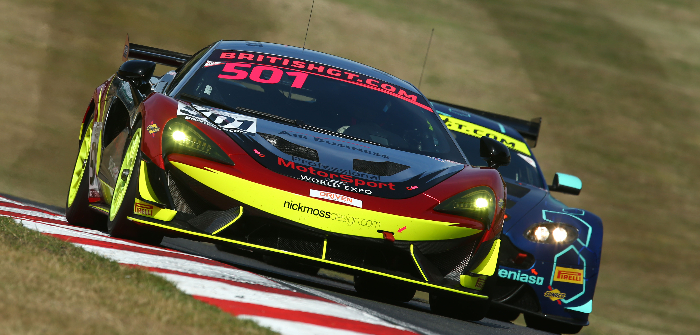When Kimi Räikkönen stuck it on pole in Italy this year, everyone pointed to the fact that he was the second-oldest driver ever to set the fastest qualifying time in F1 (Mansell taking pole in Australia in 1994 at 41 years old, but folks seemingly forgot that Michael Schumacher took pole in Monaco in 2012 when he was 43 years old, but he started five places back due to an indiscretion). Securing the fastest lap time wasn’t Kimi’s greatest achievement on that day, but rather – it was widely declared – it was still being quick at 38 years old. Every sportsman or woman has a sell-by date and motorsport is seemingly seen as no different.
I started racing at 31 years old and so by the time I started competing, I’d got into a number of terrible road-driving habits. Worse, I cut my teeth as a motoring journalist, so I was all about sideways action. As with any driver starting out later in life, it took time for me to convert my brain into racing mode. And that career meant that I was – I remain – very sensitive to a sensitive car. I watch the kids I race against and they seemingly have far less feel, instead driving the car with blind talent and a lack of fear – or perhaps a lack of understanding that one bad decision can lead to disaster.
And that’s the thing: an older driver may have lost that ultimate edge – the last tenth – but his or her brain will almost certainly be trained – honed – to work in slow motion. While all the chaos is kicking off around them, the older driver will typically be able to use their experience to pick their way through the carnage. An older driver can also read a competitor’s thoughts and plans far more accurately than the youth of today. When you’ve seen a move a thousand times, you already know when it’s coming and thus how to prevent it being successful. Likewise, an older driver knows how to pull a move that the younger guys don’t see coming. Unquestionably a bit of general life experience also helps the older peddler manage off-track anxieties as well as on-track action.
To see what an older racer can do, look at what Supercars legend Craig Lowndes can achieve: at 44 this year, he has announced his retirement from full-time driving at the end of the season. He doesn’t always qualify at the front these days, but he is the driver who comes through the field better than any other on the grid. And he looks after his tires better. And he gets tied up in fewer on-track incidents. As I type, he’s once again in the Championship hunt.
A further disadvantage of a younger, less experienced driver is that they aren’t typically as good at relaying vehicle setup information either. I doubt it is a coincidence that the Williams F1 team now regularly races at the back of the grid, the team fielding two young drivers. The advantage for older me is that I’m 100% confident in my ability to provide accurate vehicle-balance behavioral information and thus I rather arrogantly assume my car is better set up than those of the kids competing around me.
At 44 years old, I hope every off-season that my last few tenths haven’t been lost by the time I start competing again. Then again, I like to believe that if I am starting to lose natural speed, my gaining yet more experience is still outweighing that deficit. However, something Brad Jones of Brad Jones Racing said when asked what was his biggest racing regret forever haunts me: “I wish I’d realized that I’d lost my competitiveness sooner than I did…”
I read today that Kimi will stay in F1, albeit ‘demoted’ to the Sauber Alfa Romeo team. I wouldn’t mind betting that car’s setup – and thus performance – improves dramatically next year. <



